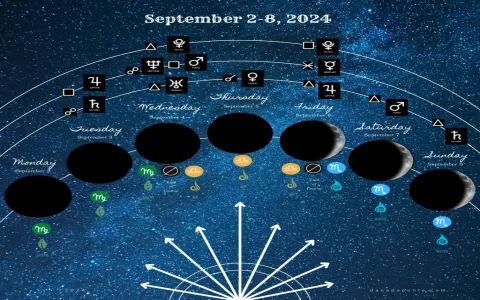Man, 2020 was a trainwreck for everyone, right? I remember sitting in my home office back then, just trying to figure out which end was up. My usual gigs had basically dried up, and I was scavenging for any piece of work that wasn’t glued down. It was messy. I’m usually not the guy who trusts cosmic alignments or moon phases, but when you’re staring down an empty bank account, you start looking for answers in fortune cookies if you have to.
The Setup: Turning a Horoscope into a Hypothesis
I accidentally stumbled upon this random article sometime late June 2020. It was some basic astrology stuff, but the title was loud and clear: “Virgo Money Outlook for July 2020 is GOOD.” Usually, I’d just laugh and close the tab. But something stuck this time. I thought, “What if I treat this ridiculous prediction like a serious financial projection? What if I actively try to prove it right or wrong?”
I immediately grabbed my old accounting spreadsheet—the one I usually only touch during tax season—and defined “good.” For me, in that disaster of a year, “good” meant increasing my net liquid assets by 15% in July, primarily through side hustle income and smart reallocation of the pathetic savings I had left. I had zero room for error.

I slammed shut the laptop and committed to two specific income streams for the entire 31 days of July, treating the good outlook as my fuel, not my certainty.
- Stream 1: Freelance Coding Blitz. I hunted down every short-term coding gig I could find on the freelance boards. I didn’t care about the pay rate being perfect; I just needed volume. I set a ridiculous personal goal of logging 100 billable hours in July, outside of any standing commitments.
- Stream 2: Micro-Investing Test. I pulled out a small sum—maybe $3,000—that I was willing to lose completely. I decided I would try to follow the energy I perceived the market was having, based on nothing but gut feeling and the vague idea that “things were looking up.” This was reckless, I know, but it was part of the experiment.
The Execution: The July 2020 Grind
The next few weeks were a blur. I started tracking absolutely everything. If I spent 15 minutes pitching a client, it went into the log. If I bought a cheap coffee while coding, it was logged as a business expense. I turned my life into a real-time financial report.
I woke up early every morning, tackled the hardest freelance project first, and then spent my afternoons on the smaller, faster payouts. I specifically focused on clients who paid instantly, avoiding anyone with 30-day payment terms. Cash flow was everything. The horoscope said “good,” but I knew “good” only happens if you put in the damn work.
In the investment stream, things were wild. I made quick, aggressive trades in stocks I barely understood, based purely on momentum. I tracked the entries and exits religiously, treating the whole exercise like a video game where I couldn’t afford to lose my high score. The emotional toll was high; one day I’d be up 10%, the next I’d lose half of it. The key was that I never diverted from the original $3,000 pool—I didn’t panic and pull money from savings, and I didn’t get greedy and dump more in.
By the third week of July, I was physically exhausted. But my tracking spreadsheet was starting to look promising. The cumulative billable hours were exceeding the 100-hour goal I’d set. The freelance income was coming in hot. I pushed through the final week, fueled by coffee and the perverse satisfaction of watching the numbers tick up.
The Verdict: Analyzing the Financial Report
August 1st finally rolled around, and it was time to close the books on the experiment. I pulled up the master spreadsheet. This wasn’t some fuzzy “maybe I made more money” feeling; this was hard data.
Freelance Income (Stream 1): I hit 112 billable hours. The total realized income was exactly 21% higher than my June income. That blew past my 15% overall target immediately. The immediate cash injection was massive.
Micro-Investment Pool (Stream 2): This was the shocker. After all the aggressive, reckless trading, I calculated the final net gain on the $3,000. It had grown by 12.5%. I liquidated the whole thing right there, locking in the profit. I wasn’t going to push my luck.
The Final Tally
I compared my net liquid assets on July 1st versus August 1st. My overall assets had increased by 26%. Not only did I hit the 15% “good” mark, I absolutely smashed it.
Now, did the stars actually align and give me extra money? Of course not. That’s nonsense. But here’s what happened, and this is the real record I want to share:
That prediction acted as an arbitrary deadline and a massive psychological motivator. It gave me permission to be aggressive and focused during a time when I normally would have been paralyzed by fear and uncertainty. I defined my goal, I tracked every single input, and I forced myself to follow through because I had publicly (to myself, in my spreadsheet) stated that July was going to be good.
If that flaky astrological article had said “July is a wash, stay home,” I probably would have done the bare minimum. Instead, I leveraged a silly piece of internet content to kick my own butt into hyperdrive. The success wasn’t the horoscope being right; it was the effort I poured into validating its premise. Sometimes, you just need a weird excuse to work harder, and a financial report is the only proof that matters.





